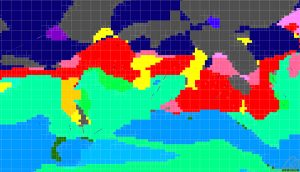My first introduction to DomainMCF blew me away
I joined Maptek in September after working as a geologist around Australia for more than a decade. Having used Vulcan for the majority of my career, I’m excited about the chance to provide training and to contribute to the development of the software.
Since I started at Maptek I’ve been helping customers with their resource modelling using traditional methods and I recently was able to undertake my first training with DomainMCF – our machine learning engine for domain modelling.
It only took a quick session to blow me away and send my head spinning with the possibilities it offers.
Before I started with Maptek I had only seen a brief video about DomainMCF on LinkedIn. A half-hour training session was enough to pique my interest.
I decided to run a comparison between a block model that I had put together by traditional methods with one generated in DomainMCF using the same data.
The original involved doing a geological interpretation, entering the interp points, creating surfaces and a bounding solid, and then flagging it into the block model – weeks, perhaps months of work.
When we ran it in DomainMCF it very quickly produced a result that was a really close match on the main ore load.
DomainMCF has a simple interface – probably the easiest panel to use I’ve ever seen in Maptek software.
You just select your block model, your bdf (block definition file) for your block extents, block sizes and then just drag in your composite file that contains your lithology codes and domains, and then start processing the data.
It only took about 20 minutes to run – and this was on a big block model.
Some of the outer domains away from the main ore lode required further attention as they were not modelled within the known geological context and were therefore beyond the function of DomainMCF. This reinforces how understanding the geological setting and lithology of a deposit is vital for geologists in determining the validity of the domains produced.
From what I’ve seen I think it has great potential for very complex orebodies that could take you months to traditionally wireframe and try to interpret.
As long as your logging and coding at the raw data stage is good, you could use DomainMCF and it could quickly give you a few different scenarios to interrogate.
If you’re doing some exploration work and you just want to quickly run a few scenarios to get a block model that has its domains flagged in, it would be great for that sort of work.
That’s what sort of blew me away, I thought ‘Wow! You could throw a lot of data in it and rapidly get an indication of what’s happening.’.
I figure it would be a time and cost-effective method for large organisations that want to quickly assess geological resources, prior to undertaking due diligence.
The traditional methods have been in use for a while, so it makes sense that geologists will want to refer to them.
I personally would still like to go through the data and interpret it all, but at a first look, as a first pass DomainMCF was pretty good at giving an indication of the various domains present within a deposit.
It’s enough to say ‘Let’s look further into this’ and be able to do that in 20 minutes, not a few weeks or even months.
I can’t wait to learn more about ‘what’s under the hood’ of DomainMCF – the algorithms behind it – and look forward to seeing how it can benefit a range of projects and deposits.



